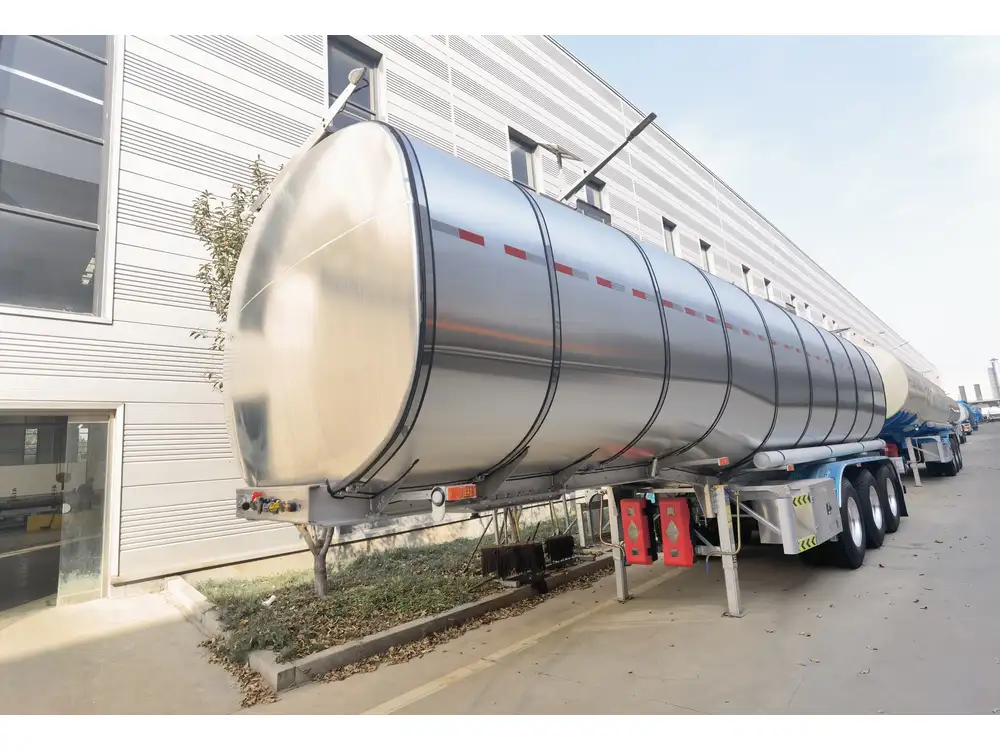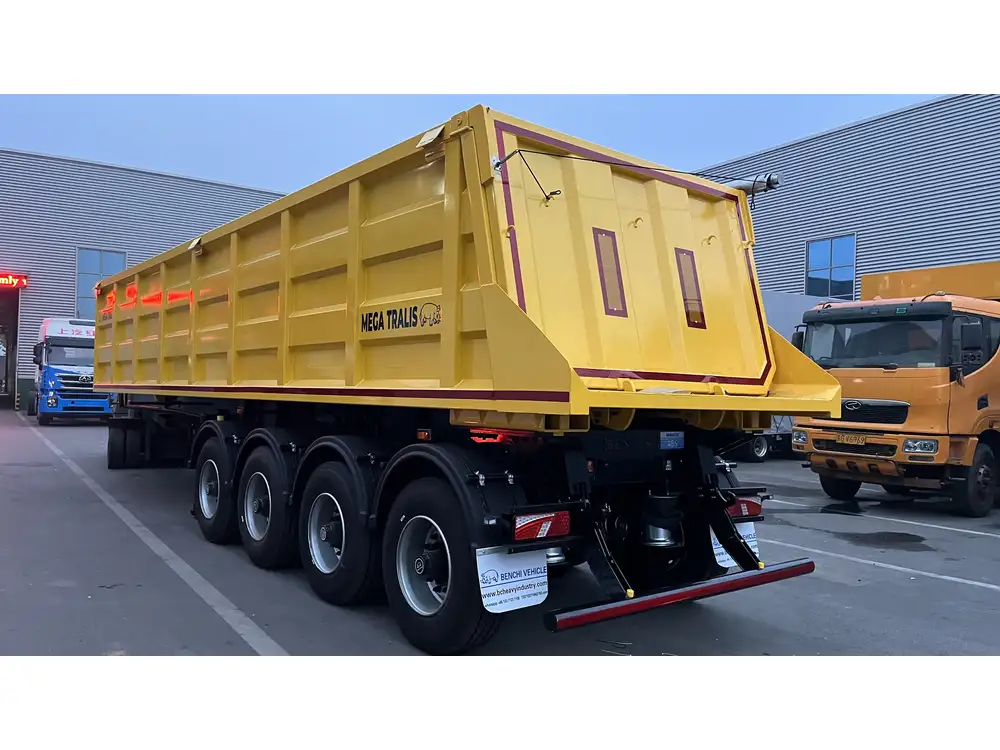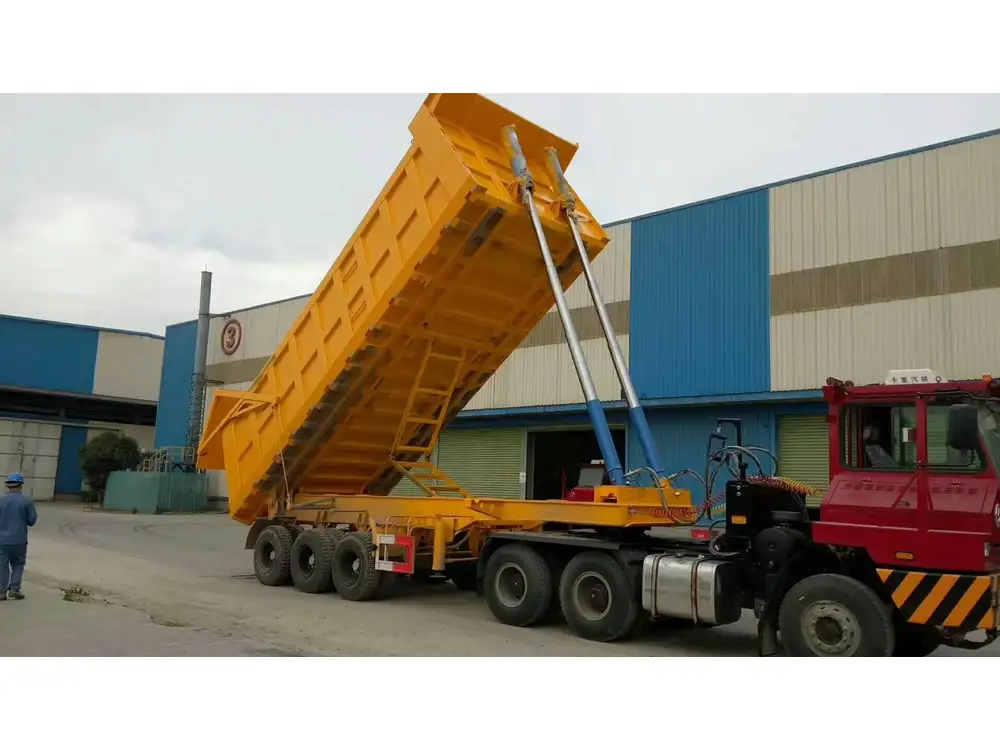When it comes to hauling materials efficiently, dump trailers stand out as an indispensable tool in the arsenal of contractors, landscapers, and DIY enthusiasts alike. However, one critical question that often arises is, “How many yards are in a dump trailer?” This query is paramount for ensuring effective load management and planning for any project involving bulk material transport. In this comprehensive guide, we will uncover the intricacies of dump trailer capacities, delve into various types, and explore their practical implications through detailed analysis and structured information.
Table of Contents
- Introduction to Dump Trailers
- Dump Trailer Types and Their Capacities
- Standard Dump Trailers
- Heavy-Duty Dump Trailers
- Low-Profile Dump Trailers
- Calculating Volume: How Many Yards Fit in a Dump Trailer?
- Factors Influencing Dump Trailer Capacity
- Trailer Size
- Material Density
- Load Distribution
- Practical Applications of Dump Trailers
- Construction Projects
- Landscaping and Gardening
- Waste Management
- Conclusion
1. Introduction to Dump Trailers
Dump trailers are specialized vehicles designed to haul and unload heavy materials with ease. Unlike traditional trailers, dump trailers feature a hinged design allowing the bed to tilt, facilitating the rapid unloading of their contents. From transporting gravel and sand to debris removal, the versatility of dump trailers makes them essential for various industries. In understanding how many yards these trailers can carry, we gain insight into their operational effectiveness and efficiency.

2. Dump Trailer Types and Their Capacities
Knowing the different types of dump trailers can help users determine the specific capacities and choose the right model for their needs. Below, we summarize essential information about three common types of dump trailers.
| Dump Trailer Type | Average Capacity (Cubic Yards) | Ideal Use |
|---|---|---|
| Standard Dump Trailers | 5 to 14 cubic yards | General-purpose transport for various materials |
| Heavy-Duty Dump Trailers | 10 to 20 cubic yards | Ideal for construction debris or heavy loads |
| Low-Profile Dump Trailers | 7 to 12 cubic yards | Suitable for unloading in low-access areas |
A. Standard Dump Trailers
Standard dump trailers typically have a capacity ranging from 5 to 14 cubic yards. They are versatile and commonly used for a variety of materials such as dirt, gravel, and mulch. These trailers come with various dimensions, allowing users to select models that fit their hauling requirements.
B. Heavy-Duty Dump Trailers
Heavy-duty dump trailers are engineered for strength and durability, making them suitable for bulkier and heavier loads. With average capacities of 10 to 20 cubic yards, they are often employed in construction projects where heavy materials, such as concrete and stone, must be moved.

C. Low-Profile Dump Trailers
Low-profile dump trailers are designed for specialized needs, particularly in situations where height is a concern. These trailers typically carry from 7 to 12 cubic yards and are perfect for landscaping jobs when access is limited.
3. Calculating Volume: How Many Yards Fit in a Dump Trailer?
To answer the question directly, the number of yards that fit in a dump trailer relies heavily on the trailer’s dimensions, design, and the material being loaded. A cubic yard is defined as the volume of a cube with edges measuring one yard long, equivalent to 27 cubic feet. Therefore, understanding the physical capacity of a dump trailer requires converting its measurements into cubic yards.
To calculate the volume, apply the formula:
[ \text{Volume (Cubic Yards)} = \frac{(\text{Length (ft)} \times \text{Width (ft)} \times \text{Height (ft)})}{27} ]For example, a dump trailer that measures 8 feet long, 6 feet wide, and 3 feet high would have:
[ \text{Volume} = \frac{(8 \times 6 \times 3)}{27} \approx 5.33 \text{ cubic yards} ]This basic calculation notes how important it is to consider trailer dimensions alongside unit conversions to ascertain the number of yards.
4. Factors Influencing Dump Trailer Capacity
Before selecting a dump trailer for a specific task, it is crucial to consider various factors that influence its overall capacity and effectiveness.

A. Trailer Size
Trailer size directly correlates with its hauling capability. Larger trailers can accommodate bigger loads, but they also invite challenges such as maneuverability, loading heights, and towing vehicle compatibility. The choice of the trailer should match the intended use to optimize operations.
B. Material Density
Different materials have varying densities, which significantly impacts how efficiently they fill a dump trailer. For instance, a cubic yard of gravel weighs approximately 1,400 pounds, while the same volume of soil may weigh around 2,000 pounds. This difference necessitates adjustments in loading practices and may dictate usage limitations.
C. Load Distribution
Proper load distribution within a dump trailer is critical for safe towing and stability. Uneven loads can lead to swaying, increased tire wear, and an overall unsafe driving experience. Always ensure that material is loaded evenly across the bed for optimum performance and handling.

5. Practical Applications of Dump Trailers
Dump trailers possess immense utility across several fields, enhancing productivity and efficiency:
A. Construction Projects
In the construction arena, dump trailers provide an invaluable service. They facilitate the transport of aggregates, demolition debris, and building materials, streamlining workflows and job site organization. Their ability to offload quickly can minimize downtime, ensuring projects remain on schedule.
B. Landscaping and Gardening
For landscapers, dump trailers serve as a literal lifeline. From carrying loose materials like mulch and soil to transporting larger specimens such as trees or boulders, they alleviate much of the physical labor associated with landscaping projects. Their versatility allows for a wide range of applications, making them indispensable to professionals in this field.

C. Waste Management
In waste management, dump trailers offer an effective solution for moving debris to disposal sites. The capability to quickly offload waste contributes to maintaining cleanliness at job sites and supports efficient waste removal operations.
Conclusion
Determining “how many yards are in a dump trailer” is no simple feat, given the complexity involved with different types, sizes, and materials. With capacities ranging from modest to heavy-duty and considerations surrounding material density and load distribution, understanding these aspects ensures that users select the right trailer for their needs.
In essence, dump trailers revolutionize the transportation of heavy materials by enhancing efficiency and reducing manual labor requirements. Whether one is engaged in construction, landscaping, or waste removal, recognizing the significance of trailer capacity can lead to more productive and organized operations.
As always, making informed decisions based on an understanding of these fundamentals will empower users to leverage their dump trailers to the fullest.



